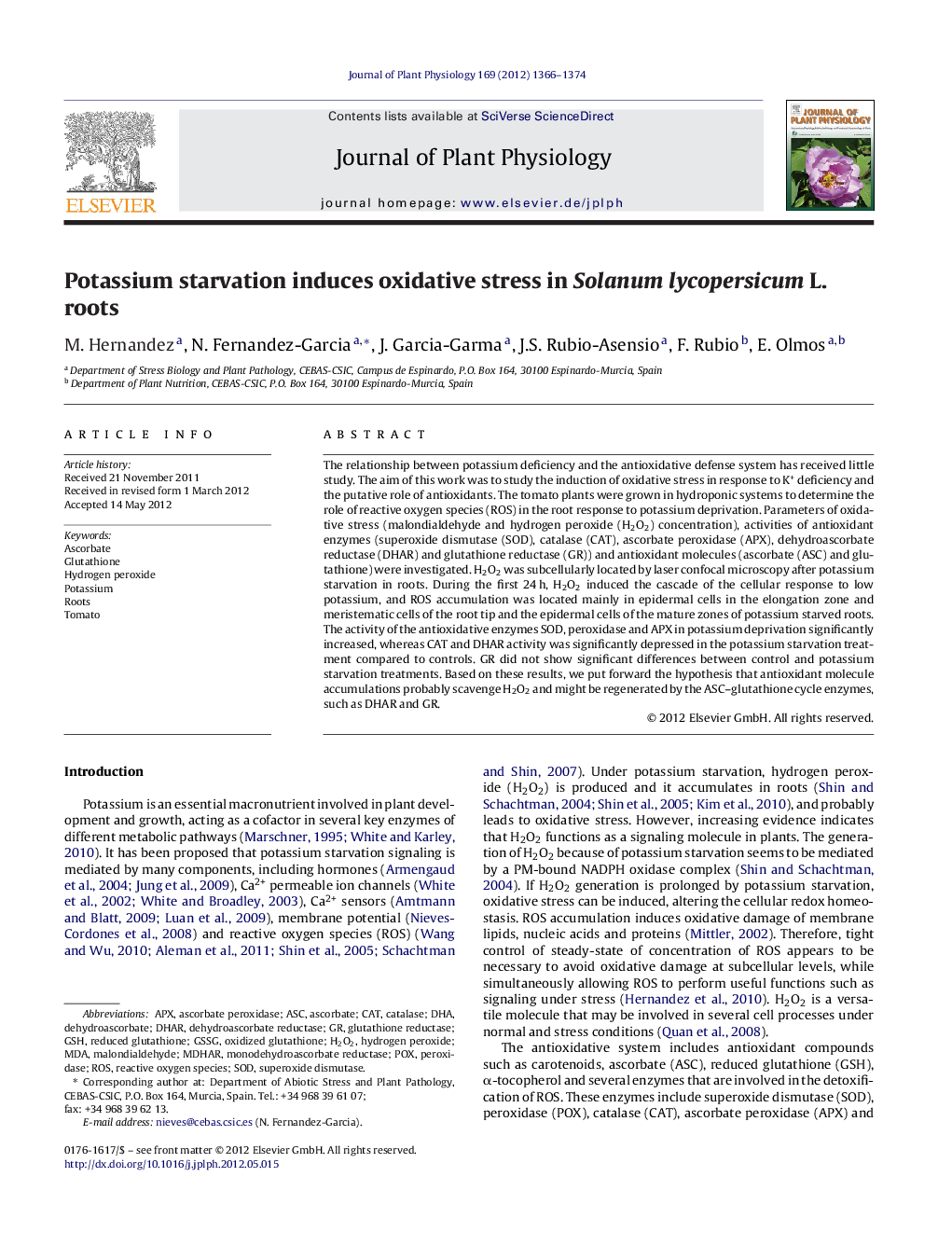| Article ID | Journal | Published Year | Pages | File Type |
|---|---|---|---|---|
| 2056182 | Journal of Plant Physiology | 2012 | 9 Pages |
The relationship between potassium deficiency and the antioxidative defense system has received little study. The aim of this work was to study the induction of oxidative stress in response to K+ deficiency and the putative role of antioxidants. The tomato plants were grown in hydroponic systems to determine the role of reactive oxygen species (ROS) in the root response to potassium deprivation. Parameters of oxidative stress (malondialdehyde and hydrogen peroxide (H2O2) concentration), activities of antioxidant enzymes (superoxide dismutase (SOD), catalase (CAT), ascorbate peroxidase (APX), dehydroascorbate reductase (DHAR) and glutathione reductase (GR)) and antioxidant molecules (ascorbate (ASC) and glutathione) were investigated. H2O2 was subcellularly located by laser confocal microscopy after potassium starvation in roots. During the first 24 h, H2O2 induced the cascade of the cellular response to low potassium, and ROS accumulation was located mainly in epidermal cells in the elongation zone and meristematic cells of the root tip and the epidermal cells of the mature zones of potassium starved roots. The activity of the antioxidative enzymes SOD, peroxidase and APX in potassium deprivation significantly increased, whereas CAT and DHAR activity was significantly depressed in the potassium starvation treatment compared to controls. GR did not show significant differences between control and potassium starvation treatments. Based on these results, we put forward the hypothesis that antioxidant molecule accumulations probably scavenge H2O2 and might be regenerated by the ASC–glutathione cycle enzymes, such as DHAR and GR.
